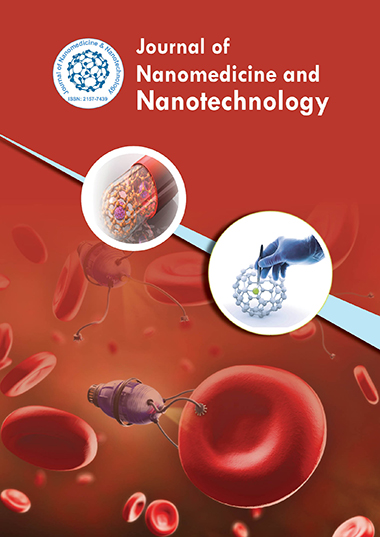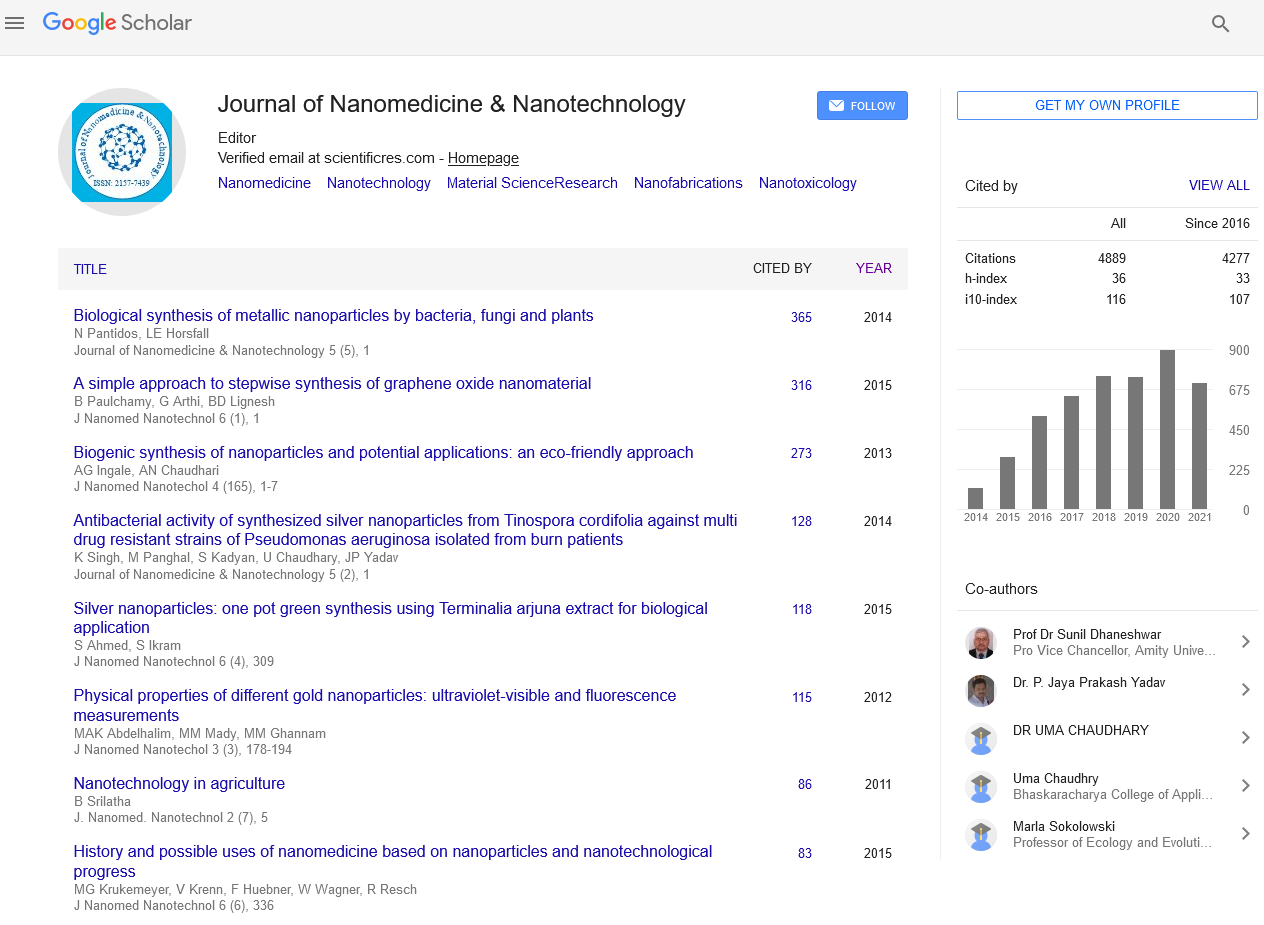Indexed In
- Open J Gate
- Genamics JournalSeek
- Academic Keys
- JournalTOCs
- ResearchBible
- China National Knowledge Infrastructure (CNKI)
- Scimago
- Ulrich's Periodicals Directory
- Electronic Journals Library
- RefSeek
- Hamdard University
- EBSCO A-Z
- OCLC- WorldCat
- SWB online catalog
- Virtual Library of Biology (vifabio)
- Publons
- MIAR
- Scientific Indexing Services (SIS)
- Euro Pub
- Google Scholar
Useful Links
Share This Page
Journal Flyer

Open Access Journals
- Agri and Aquaculture
- Biochemistry
- Bioinformatics & Systems Biology
- Business & Management
- Chemistry
- Clinical Sciences
- Engineering
- Food & Nutrition
- General Science
- Genetics & Molecular Biology
- Immunology & Microbiology
- Medical Sciences
- Neuroscience & Psychology
- Nursing & Health Care
- Pharmaceutical Sciences
Abstract
Plasmonic Nanomaterials for Sensing and Detection of Pathogens
The rapid detection of pathogens is critical for public health, clinical diagnostics, and environmental monitoring. Plasmonic nanomaterials have garnered significant attention as promising candidates for pathogen sensing and detection due to their unique optical properties, including surface plasmon resonance (SPR) and localized surface plasmon resonance (LSPR). These materials exhibit strong interactions with light, which can be harnessed to detect the presence of specific biomolecules, including pathogens, with high sensitivity and specificity. Plasmonic nanomaterials, such as gold and silver nanoparticles, nanorods, and nanoshells, offer advantages like fast response times, label-free detection, and compatibility with portable devices. This article explores the principles of plasmonic sensing, the different types of plasmonic nanomaterials used in pathogen detection, and their applications in diagnosing infectious diseases. Challenges related to the specificity, sensitivity, and real-time monitoring capabilities of plasmonic sensors, as well as future directions for research, are also discussed.
Published Date: 2024-11-30; Received Date: 2024-11-02


